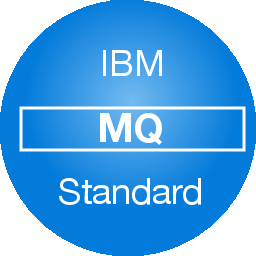An IBM project to create Queue Manager on existing IBM MQ on a target server
Project overview
Here is a summary of what this project will achieve.
This project is designed to create Queue Manager on existing installation of IBM WebSpehere Message Queue using RapidDeploy.
The server in the project is Windows. It can be cloned to Linux if required.
The project is preconfigured with one target environment.
Specific application configuration items can be changed between environments, by use of Data Dictionary items.
On MidVision documentation you can find more information and step by step tutorial how to create this project.
Prerequisites
- A remote Windows server with firewall configuration that allow connection from the machine when RapidDeploy instance is installed (for testing purposes we suggest to turn the firewall off).
- RapidDeploy Agent should be downloaded and running on a remote Windows server
- You should have IBM MQ already installed on your remote server (follow this tutorial to install IBM MQ)
- IBM MQ installation is based on tasks that are included in
rapiddeploy-core-plugins-prd-ibm-wmq.jar,rapiddeploy-ext-wmq-jar-3.5.18.jar– so make sure these jars are in your RapidDeploy agentlibfolder or they are added to your project classpath - Make sure you have correct values in your hosts file (http://www.rackspace.com/knowledge_center/article/how-do-i-modify-my-hosts-file).
- You will need the IBM MQ blueprint downloaded to your desktop:
What is preconfigured and demonstrated
The project demonstrates the following configurations:
- One target server for Windows. The user will need to configure the actual hostname for this logical server definition.
- Use of the RapidDeploy agent. If deploying to Linux then you’ll probably want to change this to use the SSH.
WmqDefaultManageQueueManagerTasktask to create Queue Manager on your IBM MQ (see the task specification)
How to use this project
- Download the project to your desktop by clicking on one of the links. The file will be saved as
IBM_MQ_CREATE_QM.zip - Log into your RapidDeploy instance as mvadmin.
- Navigate to
Resources -> Projects. - In the top right hand corner click on the
Upload Projectbutton. - Select the zip file you downloaded in step 1.
- You are guided through a project import wizard. The important thing to check and change (if necessary) here is the path to the project storage directory (you will need to check it in SCM Repository tab, Artifact Repository tab and File System tab). Look at the example below:
For example you are running RapidDeploy on Windows and your
${MV_HOME}is set toC:/MV_HOME/midvision. Usually all RapidDeploy projects are stored in the${MV_HOME}\projectsdirectory. After importing our project, if you noticed that Project Root Directory path on the SCM Repository tab is/rd/projects/IBM_MQ_CREATE_QM, then in this case you will need to change the path to C:\mv_home\midvision\projects\IBM_MQ_CREATE_QMas it is shown here:
Change paths in Artifact Repository and File System in similar way
- Once the project is imported, there are a couple of things you’ll need to do.
- Firstly, you will need to change the server configuration. In order to do that navigate to
Resources -> Targets -> Serversand findaws-wmq-windows-server(this is the name we used in our sample project). Edit this server – put correct Hostname then navigate toTransporttab and check if it is possible to connect to your remote Windows server by clicking Test connection .
Note that Successful connection is mandatory to go further! - Secondly, navigate to
Resources -> Projectsand edit the project. Navigate to thePackagestab and click theCreate Packagebutton. A new package is created with a version number. This is the package you’ll deploy later, containing all the environment definitions, actions and payload (IBM_MQ_CREATE_QM-0.0.1.jar) to allow the jobs to be run on all defined servers
- Firstly, you will need to change the server configuration. In order to do that navigate to
- Navigate to
Project-> TargetsTab.- Select the
Playbutton next to the target. - Select the package you want to deploy from the droplist.
- Since there is only one package, it is preselected. The latest package will always be preselected by default.
- Click on the
Yesbutton in this dialog. - The deployment is started and you are taken to the running jobs panel where you see the tasks executed and job log in real time.
- Select the





